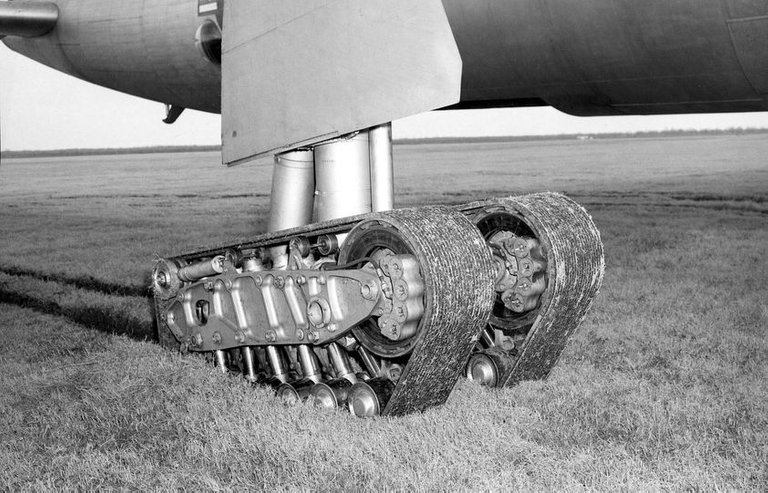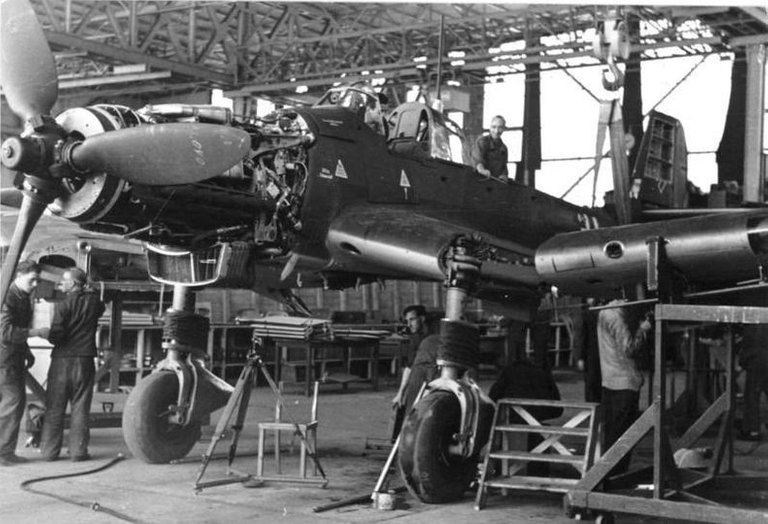This is an experimental tracked landing gear unit trialled on the B-36 Peacemaker. With a wingspan of 70 meters (230 ft) and a length of 50 meters (160 ft), the B-36 is one of the largest aircraft ever built.
This is an experimental tracked landing gear unit trialled on the B-36 Peacemaker. With a wingspan of 70 meters (230 ft) and a length of 50 meters (160 ft), the B-36 is one of the largest aircraft ever built.
With its great size came great weight. Initially, the B-36 was to have a single enormous wheel with a 600 kg tire on each main landing gear. These wheels had a relatively small contact area for an aircraft of this weight, resulting in immense ground pressure. With this setup, the B-36 was limited to just a handful of air bases.
The US trialled a tracked landing gear that improved the bomber's weight distribution on the ground. This idea had actually been circulated by J. Walter Christie, a tank designer, in the 1930s and researched throughout the 1940s.
Previous trials had shown some success, but the B-36 was simply too heavy for such a system to cope with. A single flight in March 1950 was performed with the system fitted. The B-36 would eventually receive four-wheel bogies.
/2/Wings and final equipment being fitted to to a Junkers Ju-87 'Stuka' at the Lamwerder plant, Germany 1942. The design of what would become the Stuka began with Junkers engineer Hermann Pohlmann. The notion of dive bombing, which allowed very accurate placement of bombs, emerged in the 1920s. Pohlmann began work on a design for a German dive bomber and his early work became the basis for the Ju-87. https://planehistoria.com/wwii/ju-87/

